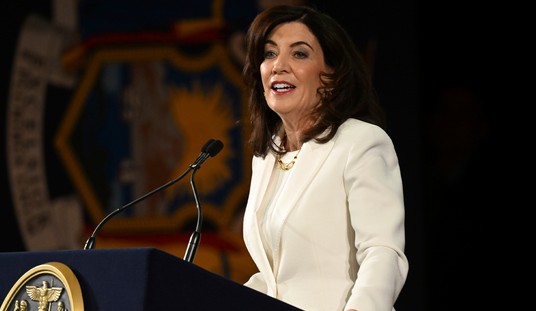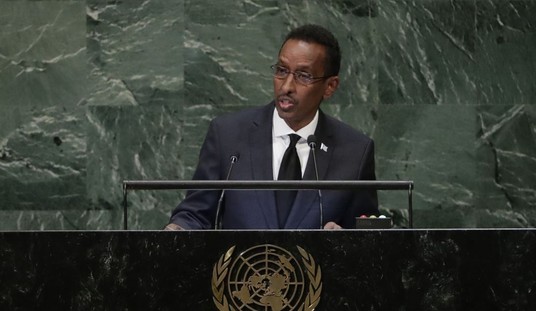Three primaries, three winners, no major consensus on who’s the party should nominate to run against an incumbent president. A fractured party based upon social issues, marital infidelity, wealth redistribution, economic inequality, and a growing deficit saw a series of different victories in early primary states. Such was the dilemma facing the Democrat Party in 1992.
Four major candidates emerged from the field, all providing a different niche to the party. Senator Tom Harkin of Iowa, ran a populist campaign based on the needs of the working class (cough-the 99%-cough) with the backing of labor unions. Senator Paul Tsongas from Massachusetts who had some party support was viewed too conservative for activist Democrats, due to his major concerns for deficit spending. Many on the left called him a Reagan-Democrat, partly due to the fact he believed Democrats should focus their attention on economic growth over wealth redistribution; ironically he had the backing of then businessman Mitt Romney. Governor Jerry Brown of California ran a populist grassroots campaign even though he was dismissed by most in the media and in his party. Brown dubbed Washington “the bipartisan Incumbent Party”, and campaigned on issues of a living wage, opposing NAFTA, and a flat tax. Due to a limited budget, Brown got his message across by the means of alternative media. The other major candidate, Bill Clinton, campaigned on theme, “I still believe in a place called Hope.” Clinton was the native son of the south who dealt with a series of controversies due to his use of marijuana, dodging the draft, and extramarital affairs; no word yet on his opinion of the idea of an open-marriage.
Early on in the campaign there was no clear winner. Harkin won Iowa; Tsongas took New Hampshire (though Clinton’s surprise 2nd place finish dubbed him “the comeback kid“); Brown was victorious in Maine; Robert Kerrey, a minor candidate, won South Dakota; and Brown won again in Colorado. It wasn’t until the election was taken to his native South that Bill Clinton was able to regain his footing and win his first primary, Georgia, and by a huge margin 57% to Brown’s 24%.
Recommended
However, this did not seal the deal for Clinton, Brown would go on to win four of the next six primaries, the other two would go to Harkin and Clinton.
Clinton swept the once solid Democratic south, winning Florida, Mississippi, Louisiana, Okalahoma, Tennessee and Texas. Tsongas and Brown took several states in the Northeast and Alaska. Many thought that Clinton was not politically appealing outside the old Confederacy.
It took three elections on April 7, 1992 to decide that years Democratic primary: New York where Clinton trumped Tsongas 41%-29%; Minnesota where Clinton beat Brown 31.1%-30.7%; and Wisconsin where Clinton took the state 37% to Brown’s 34.5%.
Clinton had many of the attributes of present day candidate, Newt Gingrich. Both are larger than life, give dynamic debate performances, native sons of the south, and have massive character flaws. Aside from just their personal convictions and traits that were similar, Clinton and Gingrich played to a similar constituency, that of the working class, under-educated, and most greatly affected by the recession voters.
This working class vote, looking for a voice in the political system is not new to the Republican Party. They are the same voters in the Pat Buchanan constituency on the Republican side, Buchanan ran in 1992 against sitting President George H.W. Bush. Buchanan saw working people, who were socially conservative but had felt that Washington was a system that had cut them out. Buchanan campaigned on “Conservatism of the Heart” as he dubbed it, “letting people know that you know how bad their hurting.” In his famous Culture Wars speech in the 1992 Republican National Convention, Buchanan said of working people, “these people are our people… we need to reconnect with them”. After his endorsement of George H.W. Bush, many of these voters reconnected with Ross Perot.
This time that voting bloc of white working class is more important than ever. There is an overwhelming change that has occurred in the Republican primary. Working class white voters feel like they are going through a massive change, not only politically and economically but culturally.
Currently, a member of the white working-class, is only 48% likely to be married; one in five men do not have a full time job; 59% are secular, meaning they do not actively practice any faith; and are more likely to have children out of wedlock. This numbers are excessively higher than the upper middle class white voters, Romney voters.
For white working class in states like South Carolina, Romney is everything that got them to this place; an exporter of jobs, a Northeastern elitist, and pro-Washington D.C. establishment. And while Gingrich is no perfect candidate, he is from the South, he is raging against the machine, and he has a record of fighting for the Republican Revolution of 1994. Authoring about three thousand books on Ronald Reagan hasn’t hurt either. Therefore he is one of their own.
The fear for Republicans should be this; If Romney becomes the nominee, the white working class voters will be alienated and a third party candidacy could emerge. If Gingrich is the nominee, he will be what he always has been, a blind opportunist, taking the party down in defeat in November and taking with him Scott Brown and Dean Heller. That is of course unless, a left wing populist candidate could emerge and play a Perot style upset on this sitting president.
In 1992, the Democrat primary felt much like the Republican primary does in 2012. The Republican Party is playing a game of Russian Roulette, where there seem to be four very weak nominees and only three bullets.

























Join the conversation as a VIP Member